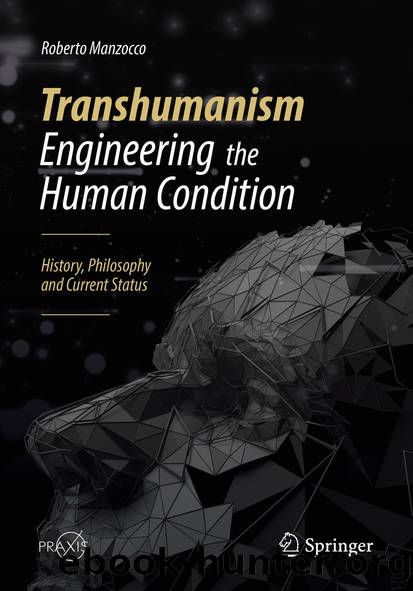Transhumanism - Engineering the Human Condition by Roberto Manzocco

Author:Roberto Manzocco
Language: eng
Format: epub
ISBN: 9783030049584
Publisher: Springer International Publishing
5.5 Nano-schism. The Drexler-Smalley Debate, and Beyond
As we said, the criticism of Drexler was intense, and the most famous debate on the matter was that between him and Richard Smalley, which took place through a series of letters published between 2001 and 2003 in Scientific American and Chemical & Engineering News. The bone of contention was the feasibility of the assemblers, which, for Smalley, was impeded by some fundamental physical laws and, in particular, by the fact that, atoms being sensitive to each other’s presence, they could not be manipulated in the “clean” way desired by Drexler. In particular, to work, the assembler would require several arms, which should consist of several atoms; there would therefore not be enough space for all of the arms that the assembler needs to precisely control a certain reaction – a difficulty that Smalley baptizes the “problem of the fat fingers.” In addition, the arms would sometimes end up adhering to the atoms that they would like to manipulate and could no longer release them – the “problem of the sticky fingers.”
In response, Drexler advanced the example of ribosomes, cellular organelles that do exactly what Smalley says is impossible, that is, they produce proteins in a precise way. The “fat fingers” would not be a problem, because, in reality, many reactions would require only two reagents. The “sticky fingers” would also be a problem only for certain reactions, not for all of them.
The subsequent skirmishes between Smalley and Drexler focused on the question of water. It is true that enzymes and ribosomes are at the center of a very complex chemistry, admitted Smalley, but the reactions that concern them are facilitated by the aqueous solutions in which they are immersed. Enzymes and ribosomes thus cannot construct anything that is chemically unstable in water, and therefore could not create the materials that modern technology uses. In practice, for the Drexlerian nano-machines to be possible, there should be a chemistry as complex as the organic one, but not based on water – a chemistry that, in centuries of research, we should have already encountered. Drexler replies that his idea is to “increase” the chemistry based on solutions, starting with the self-assembly of assemblers based on the chemistry of solutions that they would then use to go further, building other more complex assemblers. In the end, the debate – which always had a rather polemical tone, to tell the truth – turned into a sort of “dialogue between the deaf,” in which Smalley claimed that the assemblers are impossible because chemical reactions are much subtle than Drexler thinks and because few reactions would satisfy his needs, while Drexler referred him to the principles contained in Nanosystems. To this was added the accusation – lobbed by Smalley at Drexler – that he was trying to “scare children” with his stories about gray goo. Smalley’s statements go beyond scientific debate, suggesting a strategic nature. At the time, the chemist – now deceased – had big financial interests in nanotechnology; in particular, he created Carbon Nanotechnologies Inc.
Download
This site does not store any files on its server. We only index and link to content provided by other sites. Please contact the content providers to delete copyright contents if any and email us, we'll remove relevant links or contents immediately.
| Computer Vision & Pattern Recognition | Expert Systems |
| Intelligence & Semantics | Machine Theory |
| Natural Language Processing | Neural Networks |
Algorithms of the Intelligent Web by Haralambos Marmanis;Dmitry Babenko(8585)
Test-Driven Development with Java by Alan Mellor(7539)
Data Augmentation with Python by Duc Haba(7427)
Principles of Data Fabric by Sonia Mezzetta(7191)
Learn Blender Simulations the Right Way by Stephen Pearson(7118)
Microservices with Spring Boot 3 and Spring Cloud by Magnus Larsson(6937)
RPA Solution Architect's Handbook by Sachin Sahgal(6345)
Hadoop in Practice by Alex Holmes(6055)
The Infinite Retina by Robert Scoble Irena Cronin(6053)
Jquery UI in Action : Master the concepts Of Jquery UI: A Step By Step Approach by ANMOL GOYAL(5910)
Big Data Analysis with Python by Ivan Marin(5827)
Life 3.0: Being Human in the Age of Artificial Intelligence by Tegmark Max(5446)
Pretrain Vision and Large Language Models in Python by Emily Webber(4784)
Infrastructure as Code for Beginners by Russ McKendrick(4557)
WordPress Plugin Development Cookbook by Yannick Lefebvre(4268)
The Age of Surveillance Capitalism by Shoshana Zuboff(4191)
Functional Programming in JavaScript by Mantyla Dan(4166)
Embracing Microservices Design by Ovais Mehboob Ahmed Khan Nabil Siddiqui and Timothy Oleson(4054)
Applied Machine Learning for Healthcare and Life Sciences Using AWS by Ujjwal Ratan(4036)
